Galaxies and the Milky Way
|
All galaxies >>
|
NGC 891 galaxy is a barred spiral galaxy about 30 million light-years away in the constellation Andromeda.
It was discovered by William Herschel October 6, 1784. This galaxy is a member of the NGC 1023 galaxies in the local supercluster.
The object is visible in small telescopes of moderate size, as an elongated patch of faint light spread over a band of dust.
This spiral galaxy extends about 100,000 light years in diameter and is distant about 30 million light years from our galaxy in the constellation Andromeda.
NGC 891 is very similar to our own galaxy, the Milky Way.
Like all spiral galaxies, it has a thin and flat galactic disk and a central bulge in the middle. In this picture we can see detail of thick veins of dust.
A distinction is also on the presentation by the edge of NGC 891 filament of dust that extend for hundreds of light years above and below the disk.
These dusts were likely ejected from the disk by supernova explosions or intense activity of star formation.
Small companion galaxies are also visible near the galactic disk.
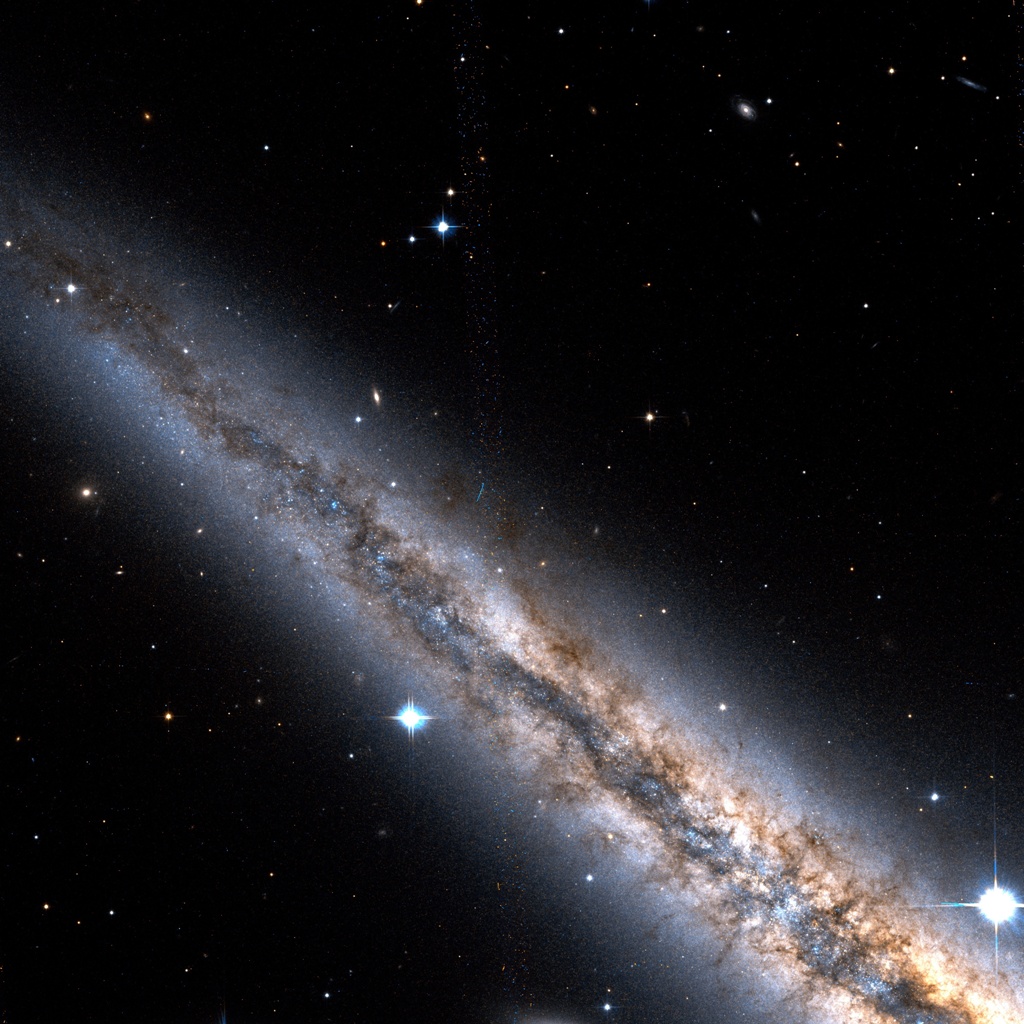
The spiral nebula, M51 is a large galaxy as it is over 60,000 light years in diameter.
This is a pair of galaxies, distant 31 million light-years. Featuring a clear spiral structure and also cataloged as NGC 5194, M51 is a member of a well known duo of interacting galaxies, spiral arms sweeping the companion galaxy NGC 5195.
This composite image combines contrasts dramatically enhanced images of M51 obtained with the 1.2-m telescope of Calar Alto Observatory.
The data include long exposures through a hydrogen-alpha filter that focuses on emissions of atomic hydrogen.
The hydrogen emission regions in the typical reddish color are called HII regions, regions where star formation is intense and located mainly along the spiral arms of M51.
This composite image also shows areas of hydrogen emission in the weak structures extending beyond NGC 5195, near upper of the image.
The Whirlpool Galaxy or NGC 5194 Tourbillon 60 000 light years in diameter is also known as the M51.
It absorbs by NGC 5195, his companion at the top.
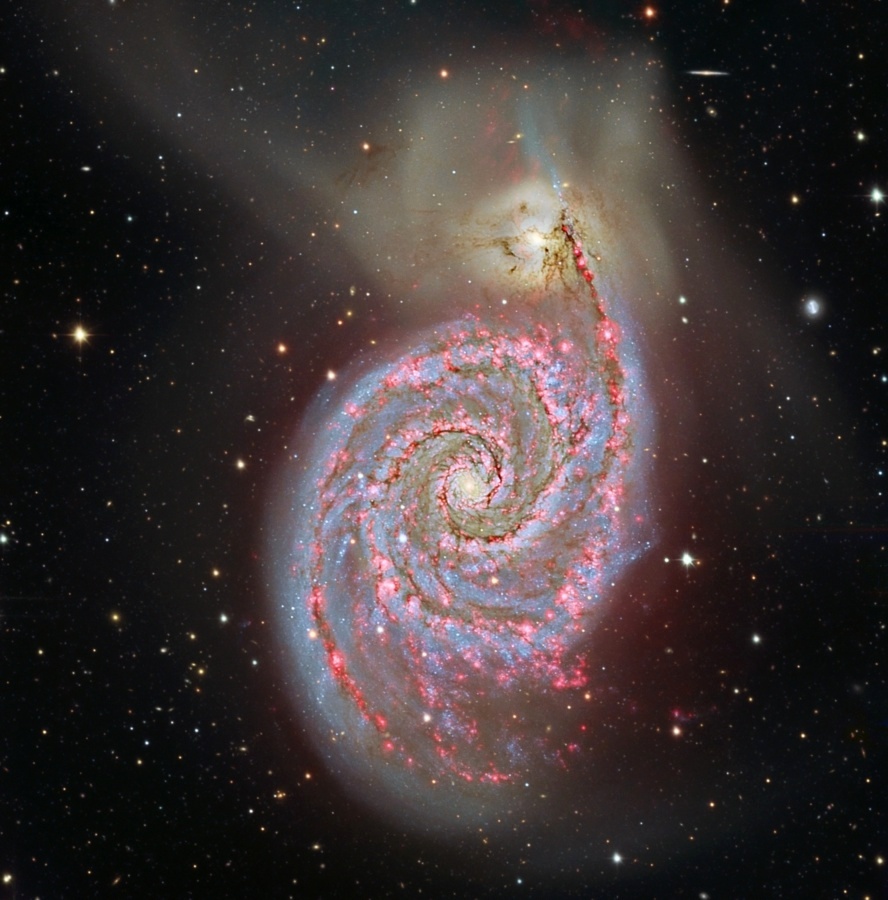
What is the explanation of the long tail of the Tadpole galaxy?
This image recorded by the camera of the Hubble Space Telescope, we see distant galaxies in the background of the spiral galaxy Arp 188.
The Tadpole Galaxy is less than 420 million light-years away toward the northern constellation Draco.
Its tail is about 280,000 light years in length and contains massive blue star clusters.
It seems that a galaxy Arp 188 has crossed the Tadpole and stretched by gravitational attraction.
This meeting would have torn the stars, gas and dust in the spiral galaxy, forming the spectacular tail.
Like the tadpole, the Tadpole Galaxy is expected to lose its tail as it ages, the clusters of stars forming the tail when smaller satellites of this large spiral galaxy.
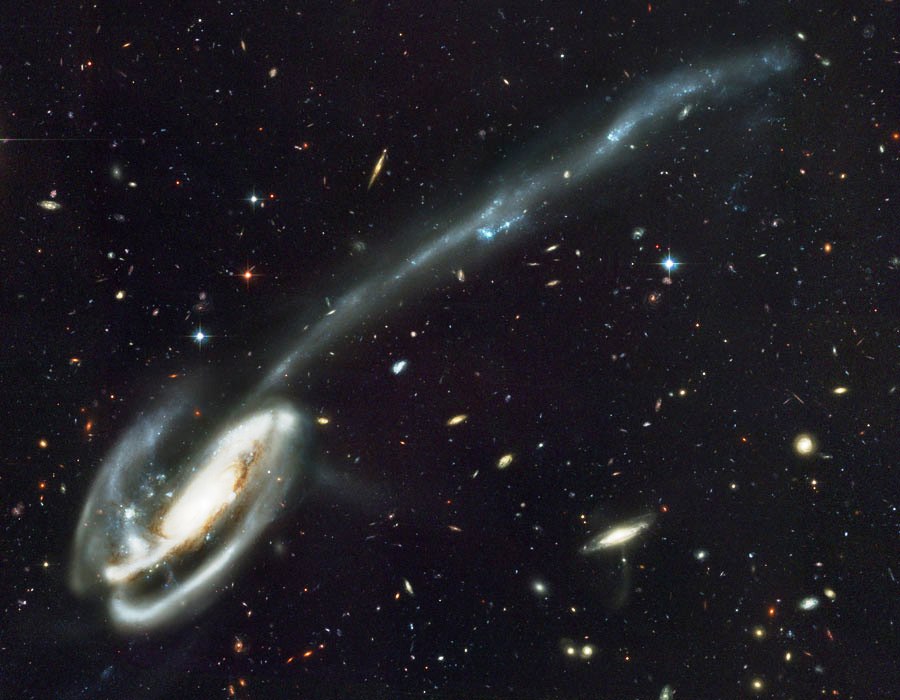
The galaxy NGC 6872 is a massive spiral galaxy at least 4 times larger than our Milky Way high.
It is over 400,000 light years in diameter and is located about 200 million light-years away in the constellation of the Peacock.
His arms are stretched by gravitational interactions, it has with the small neighboring galaxy, the galaxy IC 4970. NGC 6872 and IC 4970 are two interacting galaxies located 300 million light-years.
On the picture against this small galaxy is on the right just below NGC 6872.
Note also a fracture of the arm galaxy NGC 6872 seems attracted by the gravitational pull of IC 4970.
This beautiful image was taken by the telescope of 8 feet in diameter Gemini South in Chile.
The Gemini Observatory is an astronomical observatory consisting of two 8-meter telescopes, one for each hemisphere of the Earth.
The telescopes were funded by a consortium of institutions of the United States, the United Kingdom, Canada, Brazil, Argentina, Chile and Australia.
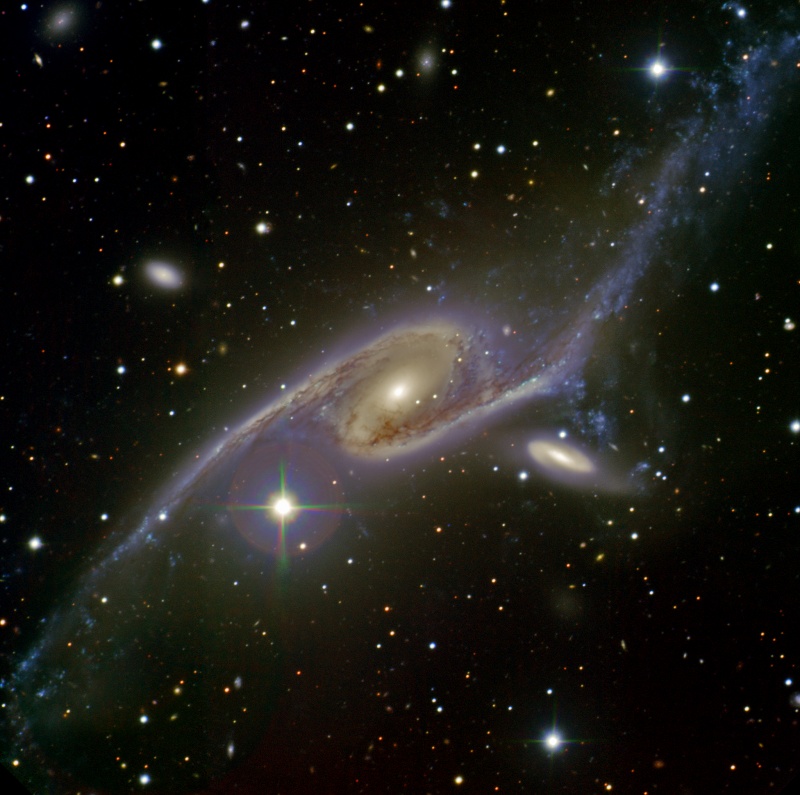
Messier 64 is the famous spiral galaxy also known as the Black Eye Galaxy of Sleeping Beauty.
The structure of dark dust hiding millions of stars located behind. Observations have shown that the gas regions outside of this spiral galaxy rotates in the opposite direction relative to the stars.
The inner part of about 3000 light years in radius, rubs along the outer edge of the disc, which rotates in the opposite direction and extends to 40 000 light years, at a speed of 300 km/s. Collisions between the gas inside and outside regions generate many hot blue stars and the nebulae show pink. The image was taken by the Hubble Space Telescope in 2001 and was published in 2004. The fascinating internal motions of M64, also referenced as NGC 4826, are interpreted as the result of a collision between a small and a large galaxy, the resulting mixture is not yet stabilized.
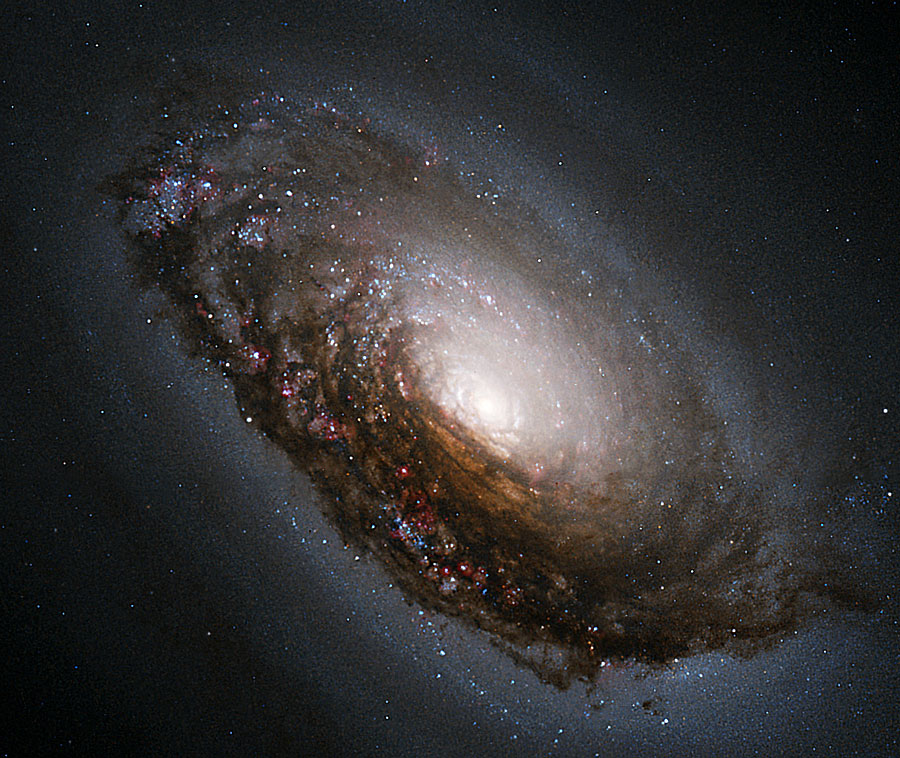
1997 © Astronoo.com − Astronomy, Astrophysics, Evolution and Ecology.
"The data available on this site may be used provided that the source is duly acknowledged."
How Google uses data
Legal mentions
English Sitemap − Full Sitemap
Contact the author